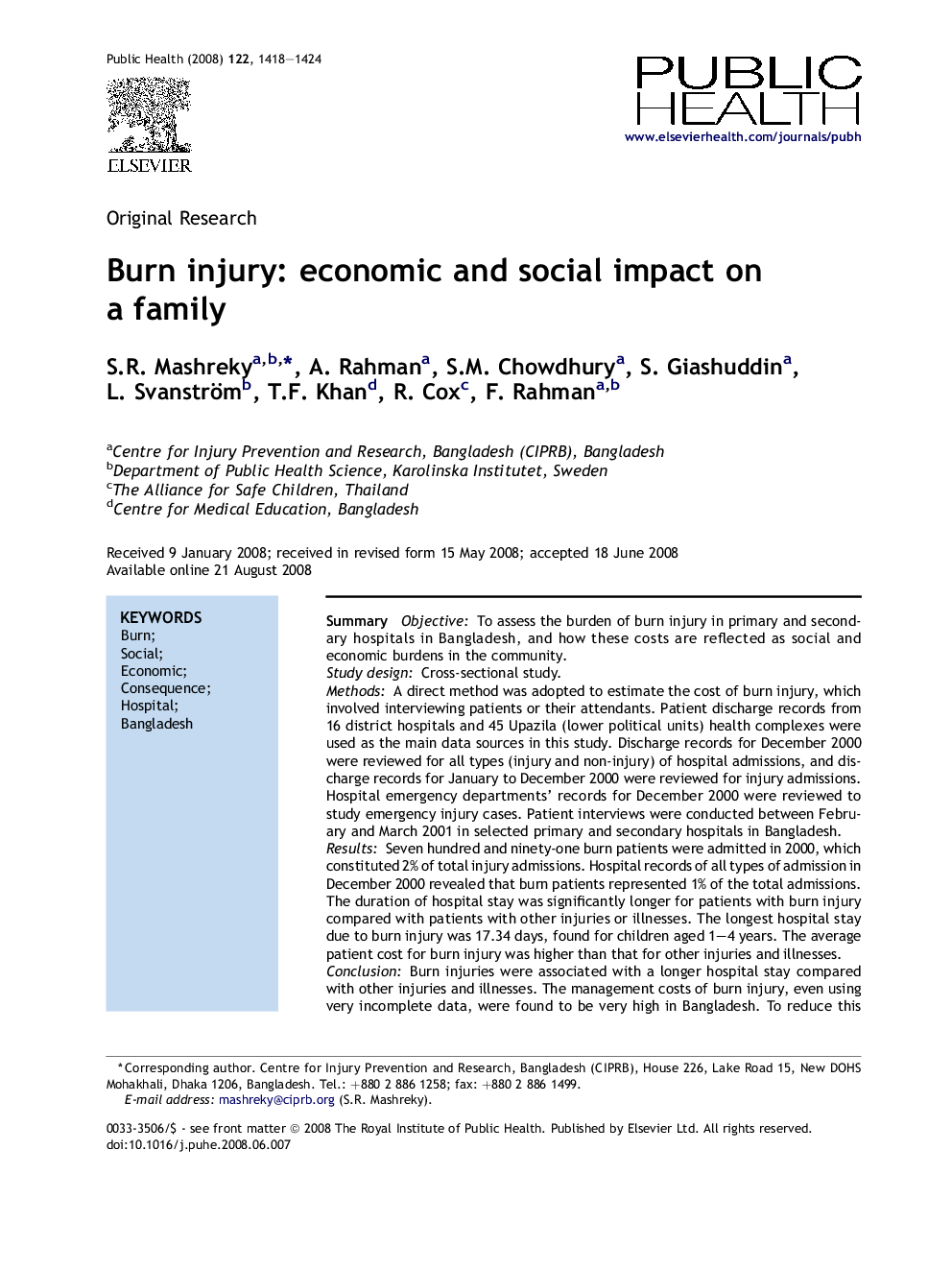| Article ID | Journal | Published Year | Pages | File Type |
|---|---|---|---|---|
| 1089016 | Public Health | 2008 | 7 Pages |
SummaryObjectiveTo assess the burden of burn injury in primary and secondary hospitals in Bangladesh, and how these costs are reflected as social and economic burdens in the community.Study designCross-sectional study.MethodsA direct method was adopted to estimate the cost of burn injury, which involved interviewing patients or their attendants. Patient discharge records from 16 district hospitals and 45 Upazila (lower political units) health complexes were used as the main data sources in this study. Discharge records for December 2000 were reviewed for all types (injury and non-injury) of hospital admissions, and discharge records for January to December 2000 were reviewed for injury admissions. Hospital emergency departments' records for December 2000 were reviewed to study emergency injury cases. Patient interviews were conducted between February and March 2001 in selected primary and secondary hospitals in Bangladesh.ResultsSeven hundred and ninety-one burn patients were admitted in 2000, which constituted 2% of total injury admissions. Hospital records of all types of admission in December 2000 revealed that burn patients represented 1% of the total admissions. The duration of hospital stay was significantly longer for patients with burn injury compared with patients with other injuries or illnesses. The longest hospital stay due to burn injury was 17.34 days, found for children aged 1–4 years. The average patient cost for burn injury was higher than that for other injuries and illnesses.ConclusionBurn injuries were associated with a longer hospital stay compared with other injuries and illnesses. The management costs of burn injury, even using very incomplete data, were found to be very high in Bangladesh. To reduce this economic burden on families, an effective burn prevention programme should be developed.
